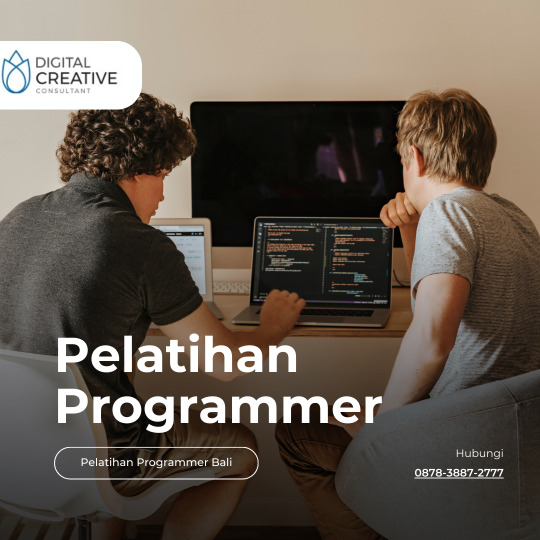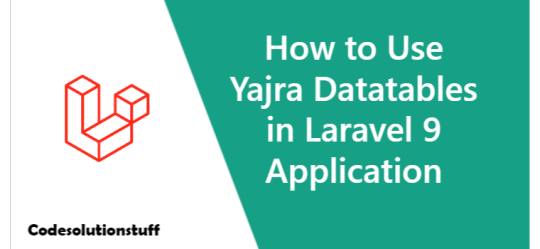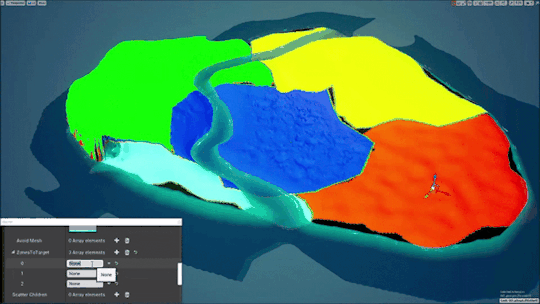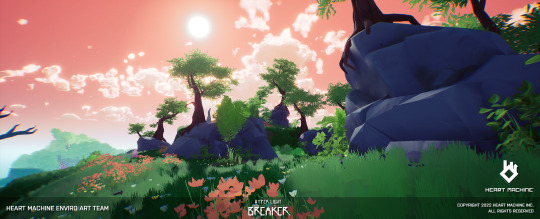#datatable server
Explore tagged Tumblr posts
Text
Working with stored procedures in ADO.NET? I’ve put together a practical, hands-on guide featuring six essential retrieval techniques, real-world C# code examples, and a ready-to-use SQL Server database for testing. ✅ Output parameters, return values, DataReaders, DataTables, and more! ✅ Full-featured console application to test the methods in action ✅ Clear, structured explanations to enhance your database skills
0 notes
Text
Raih Karier Impian Sebagai PHP Developer: Panduan Lengkap Belajar di Inolabs Academy

Apakah Anda ingin menjadi seorang PHP Developer yang profesional? Bali adalah tempat yang sempurna untuk memulai perjalanan Anda di dunia pemrograman web. Selain menawarkan suasana belajar yang nyaman, Bali juga memiliki kursus PHP Developer yang dirancang secara komprehensif untuk membantu Anda menguasai keterampilan penting dalam pengembangan web. Dalam artikel ini, kami akan membahas apa saja yang bisa Anda pelajari dan bagaimana kursus ini bisa menjadi batu loncatan bagi karier Anda di industri teknologi.
Mengapa Bali Adalah Tempat Terbaik untuk Belajar Pemrograman PHP?
Bali kini dikenal tidak hanya sebagai surga wisata, tetapi juga sebagai pusat edukasi teknologi yang terus berkembang. Bagi mereka yang serius ingin belajar pengembangan web, Bali memberikan kombinasi sempurna antara pendidikan berkualitas dan lingkungan belajar yang mendukung.
Manfaat Belajar PHP di Bali:
Suasana Belajar yang Menyegarkan: Dikelilingi oleh keindahan alam, Bali memberikan suasana yang tenang untuk belajar tanpa tekanan dari hiruk-pikuk kota besar.
Komunitas Profesional yang Kuat: Bali juga menjadi rumah bagi komunitas pengembangan teknologi global, di mana Anda bisa berkolaborasi dan belajar dari para ahli yang sudah berpengalaman.
Keunggulan Kursus PHP Developer di Bali
Pengajar Profesional dan Berpengalaman: Kami menawarkan pengajaran dari para profesional yang telah berpengalaman dalam industri pengembangan web selama bertahun-tahun. Instruktur kami akan membimbing Anda melalui langkah-langkah penting dari dasar hingga keterampilan tingkat lanjut.
Kurikulum Berstruktur: Kursus kami mencakup topik-topik utama seperti HTML, CSS, JavaScript, hingga PHP dan MySQL. Materi-materi ini disusun secara sistematis agar Anda dapat memahami setiap aspek pengembangan web secara mendalam.
Pembelajaran Berbasis Proyek: Anda tidak hanya belajar teori, tetapi juga akan berpartisipasi dalam proyek-proyek praktis yang membantu Anda mengaplikasikan keterampilan secara langsung. Ini penting untuk mempersiapkan Anda menghadapi tantangan di dunia kerja.
Apa yang Akan Anda Pelajari dalam Kursus Ini?
1. Pengembangan Web Dasar
Anda akan mulai dengan HTML dan CSS untuk membangun struktur dan desain dasar sebuah situs web. Kami juga akan memperkenalkan JavaScript, yang memungkinkan Anda untuk membuat situs lebih interaktif dan responsif terhadap pengguna.
2. Pemrograman PHP untuk Pengembangan Aplikasi Web
PHP adalah bahasa server-side yang digunakan secara luas untuk mengembangkan aplikasi web dinamis. Anda akan mempelajari sintaks PHP, manajemen sesi, dan keamanan aplikasi. Kami juga akan membimbing Anda dalam penggunaan framework CodeIgniter, yang membuat pengembangan aplikasi web menjadi lebih cepat dan terstruktur.
3. Manajemen Basis Data dengan MySQL
Untuk pengelolaan data, Anda akan mempelajari cara menggunakan MySQL, sistem manajemen basis data yang sering dipakai dalam pengembangan web. Anda akan diajarkan cara membuat, membaca, memperbarui, dan menghapus data dengan query SQL.
4. Pengembangan Front-End dengan Bootstrap dan jQuery
Kami akan mengajarkan Anda cara menggunakan Bootstrap, framework CSS yang memudahkan dalam pembuatan desain situs responsif. Selain itu, Anda juga akan mempelajari jQuery, library JavaScript yang memudahkan dalam manipulasi elemen-elemen DOM serta pembuatan animasi dan fungsi interaktif lainnya.
5. Penggunaan Datatable untuk Pengelolaan Data yang Efektif
Anda akan belajar bagaimana menampilkan dan mengelola data dalam bentuk tabel interaktif menggunakan Datatable. Ini penting untuk mengelola data dalam aplikasi web yang kompleks dengan cara yang lebih mudah dan terorganisir.
Mengapa Harus Menjadi PHP Developer?
Menjadi PHP Developer membuka banyak peluang karier, terutama di era digital seperti sekarang. Bahasa pemrograman PHP digunakan oleh berbagai perusahaan besar, seperti Facebook dan WordPress. Dengan menguasai PHP, Anda akan memiliki akses ke berbagai peluang kerja di berbagai bidang teknologi.
Keuntungan Menjadi PHP Developer:
Keterampilan yang Dibutuhkan Secara Global: PHP adalah salah satu bahasa pemrograman paling populer di dunia. Dengan mempelajari PHP, Anda akan memiliki keahlian yang sangat dicari oleh banyak perusahaan teknologi.
Jaringan Profesional yang Luas: Selama kursus, Anda akan berkesempatan untuk bertemu dan bekerja sama dengan profesional lain yang memiliki minat serupa, memungkinkan Anda memperluas jaringan di industri ini.
Persiapan untuk Karier Jangka Panjang: Selain keterampilan teknis, kursus ini juga mencakup pengembangan soft skills seperti komunikasi, kolaborasi, dan manajemen waktu yang penting dalam dunia kerja profesional.
Metode Bootcamp Intensif untuk Penguasaan Cepat
Kursus ini dirancang dengan format bootcamp intensif, memungkinkan Anda untuk belajar secara mendalam dalam waktu singkat. Setiap sesi pembelajaran disertai dengan latihan praktis, proyek nyata, dan ujian yang dirancang untuk mengukur dan memperkuat pemahaman Anda terhadap materi yang diajarkan.
Jadwal dan Lokasi Kursus di Bali
Kursus ini tersedia di beberapa lokasi di Bali, dengan jadwal yang fleksibel. Anda bisa memilih program belajar yang sesuai dengan waktu dan kenyamanan Anda, baik dalam bentuk program intensif selama beberapa minggu atau program reguler dengan durasi yang lebih panjang.
Cara Mendaftar untuk Kursus PHP Developer
Untuk bergabung dengan kursus ini, Anda dapat langsung menghubungi kami di nomor 0878-3887-2777. Tim kami siap membantu Anda dengan informasi lebih lanjut mengenai jadwal, biaya kursus, dan proses pendaftaran. Jangan lewatkan kesempatan emas untuk belajar langsung dari para ahli dan menjadi bagian dari komunitas pengembang web profesional di Bali.
Kesimpulan
Menjadi PHP Developer adalah pilihan karier yang menarik dan penuh peluang di industri teknologi yang terus berkembang. Dengan belajar di Bali melalui kursus kami yang komprehensif, Anda akan mendapatkan pengetahuan dan keterampilan yang diperlukan untuk sukses dalam pengembangan web. Segera daftar dan mulailah langkah pertama Anda menuju karier yang sukses sebagai PHP Developer!
0 notes
Text
Online i dati di 900 mila pazienti dell'ASL di Verona

Gli hacker pubblicano i dati rubati all'Azienda ospedaliera di Verona. Sono oltre novecentomila i file esfiltrati, dalle infrastrutture informatiche dell’azienda ospedaliera universitaria integrata di Verona. Quella che in Veneto sta facendo da capofila al nuovo sistema informatico ospedaliero voluto dalla Regione e che lo scorso 23 ottobre era stata vittima di un attacco hacker. Saccheggio di dati, negli ospedali di Borgo Trento e Borgo Roma, portato a termine dalla cybergang Rhysida che aveva pubblicato suo ultimatum: la vendita nella rete Onion, al miglior offerente, di quei file al prezzo di 10 Bitcoin, corrispondenti a circa 350mila euro. “Aoui non prenderà in alcuna considerazione richieste di riscatto da parte dei criminali informatici - era stato il commento dell’azienda sanitaria alla richiesta di riscatto".

Secondo gli eserti di cyber sicurezza di Red Hot Cyber, tra i file resi pubblici da Rhysida ci sarebbero diverse analisi cliniche che partono dal 2023 fino ad anni passati. Tali analisi risultano afferenti al laboratorio dell’azienda ospedaliera universitaria integrata di Verona ma anche da altri laboratori di analisi sia pubblici che privati. Sarebbero inoltre presenti analisi genetiche provenienti da altri laboratori, probabilmente forniti dai malati, ma anche realizzati all’interno dell’Università di Verona, anche se non viene specificato il nome del paziente. Dal canto suo l’azienda ospedaliera universitaria integrata, che ha notificato l’attacco al Garante della Privacy, ribadisce di non aver registrato “alcuna perdita di dati personali, custoditi negli archivi aziendali, ma è stata pubblicata la copia di alcuni”. Dalle verifiche sinora effettuate è emerso che i dati pubblicati rappresentano una minima parte di quelli complessivamente archiviati nei files server aziendali: 0,6 terabyte (pari a 612 gigabyte) su 29 terabyte totali. La maggior parte di questi dati copiati risulterebbe essere non sanitaria, o addirittura già soggetta a pubblicazione per legge sul nostro sito web. I restanti dati rappresenterebbero documenti frammentari con informazioni cliniche, molte delle quali peraltro datate. Un gruppo di lavoro interno all’azienda ospedaliera è operativo in coordinamento con il responsabile della Protezione dei dati personali per analizzare i file pubblicati e fornire agli interessati le comunicazioni “per limitare gli eventuali disagi conseguenti l’accaduto”. E l’Aoui ricorda che “magistratura e azienda ospedaliera, in costante contatto con la Regione, sono impegnate nelle indagini, ciascuna per le proprie competenze. Sono state intraprese tutte le azioni legali atte a tutelare le vittime dell’attacco: l’azienda ospedaliera universitaria integrata di Verona e tutti i soggetti coinvolti”. Read the full article
0 notes
Text
Ejemplo de DataTables con Server Side - Más Rápido y Eficiente
Ejemplo de DataTables con Server Side - Más Rápido y Eficiente aparece primero en nuestro https://jonathanmelgoza.com/blog/ejemplo-de-datatables-con-server-side-mas-rapido-y-eficiente/
Hoy veremos un ejemplo básico de DataTables con Server Side que nos hará mostrar grandes cantidades de datos directo desde base de datos de forma eficiente y veloz. Seguramente en más de un proyecto web habrás tenido la necesidad de mostrar datos en una tabla, podremos hacerlo con una tabla normal hecha por nosotros que posiblemente lucirá bastante fea y nos tomará bastante tiempo crearla o mediante DataTables.
Para comenzar dejame decirte que si sigues utilizando tablas sencillas para tus proyectos debes de actualizarte con urgencia.
Existen muchas opciones para crear tablas mucho más presentables y con funcionalidades de otro nivel de forma más rápida.
Hoy hablaremos de una de ellas, DataTables. Así como la forma en que podemos utilizarla para mostrar datos directamente de la base de datos de nuestro proyecto.
Además, mediante esta forma que te mostraré (Server Side) el tiempo de carga de la información es de locos! Con esta forma podremos mostrar cantidades de datos impresionantes en realmente poco tiempo que si lo hacemos de forma convencional.
Hace tiempo hablamos sobre que aprender si quieres ser un desarrollador web, pues ahora te digo que si ya eres un desarrollador web y no utilizas DataTables te estas perdiendo de mucho!
¿Estas listo para pasar tus tablas al siguiente nivel? Veamos el siguiente ejemplo de DataTables con Server Side.
¿Qué es DataTables?
DataTables es una librería gratuita basada en JQuery ( y a su vez en Javscript ) para enaltecer las tablas HTML.
Agrega caracteristicas fantasticas como paginación, búsqueda instantanea, ordenamiento por columnas, responsiva para moviles, fácil de traducir a cualquier idioma, muchas extensiones (por si hiciera falta), gran comunidad e información en Internet y muchas cosas más!
Realmente si no estas utilizando DataTables en tus proyectos te estas perdiendo de mucho..
Preparando la librería
Inicialización
Para comenzar necesitamos agregar DatTables a nuestro proyecto.
Te recomiendo ir al sitio web de datatables para más información sobre cómo comenzar o puedes agregar los siguientes archivos via CDN:
Agregamos los archivos CSS / JS básicos:
<link rel="stylesheet" type="text/css" href="https://cdn.datatables.net/1.10.19/css/jquery.dataTables.css"> <script type="text/javascript" charset="utf8" src="https://cdn.datatables.net/1.10.19/js/jquery.dataTables.js"></script>
Creamos una estructura básica de HTML:
<table id="table_id" class="display"> <thead> <tr> <th>Column 1</th> <th>Column 2</th> </tr> </thead> <tbody> <tr> <td>Row 1 Data 1</td> <td>Row 1 Data 2</td> </tr> <tr> <td>Row 2 Data 1</td> <td>Row 2 Data 2</td> </tr> </tbody> </table>
Y la inicializamos en JS:
$(document).ready( function () $('#table_id').DataTable(); );
Sobra resaltar que necesitamos la librería jQuery para hacer funcionar este ejemplo. Llámala antes de la librería de DataTables.
Nuestro ejemplo
Ahora bien, para nuestro ejemplo yo utilizó varios archivos y extensiones más para maximar nuestra tabla: responsive, uikit, buttons (bastante genial para agregar botones de exportar la información en Excel, CSV y PDF), etc.
En resumen mis CSS lucen así (tengo los archivos en local):
<!-- DataTables --> <link href="assets/css/jquery.dataTables.min.css" rel="stylesheet" /> <link href="assets/css/responsive.dataTables.min.css" rel="stylesheet" /> <link href="assets/css/uikit.min.css" rel="stylesheet" /> <link href="assets/css/dataTables.uikit.min.css" rel="stylesheet" /> <link href="assets/css/buttons.dataTables.min.css" rel="stylesheet" /> <!-- DataTables -->
Y mis JS lucen así:
<!-- DataTables --> <script src="assets/js/jquery.dataTables.min.js" type="text/javascript"></script> <script src="assets/js/dataTables.responsive.min.js" type="text/javascript"></script> <script src="assets/js/dataTables.uikit.min.js" type="text/javascript"></script> <script src="assets/js/dataTables.buttons.min.js" type="text/javascript"></script> <script src="assets/js/buttons.flash.min.js" type="text/javascript"></script> <script src="assets/js/jszip.min.js" type="text/javascript"></script> <script src="assets/js/pdfmake.min.js" type="text/javascript"></script> <script src="assets/js/vfs_fonts.js" type="text/javascript"></script> <script src="assets/js/buttons.html5.min.js" type="text/javascript"></script> <script src="assets/js/buttons.print.min.js" type="text/javascript"></script> <!-- DataTables -->
Puedes obtener varias de estas extensiones en el sitio web de DataTables (Por ejemplo Buttons o Responsive).
Veamos ahora como luce nuestra tabla HTML de ejemplo.
Estructura de la tabla
Veamos como tenemos nuestra estructura HTML de nuestro ejemplo de DataTables con Server Side:
<table id="tabla_piezas" class="display nowrap tablaPersonalizada" style="width:100%"> <thead> <tr> <th>ID</th> <th>NUM DE PARTE</th> <th>DESCRIPCIÓN</th> <th>CLIENTE</th> <th>ARMADORA</th> <th>PROYECTO</th> <th>CATEGORIA</th> <th>INSTRUCTIVO</th> <th>INSTRUCTIVO 2</th> <th><i class="fa fa-bars"></i></th> </tr> </thead> </table>
Como puedes ver únicamente definimos la estructura pero no establecemos información.
Potenciando nuestra tabla
Ahora si, veamos como potenciaremos nuestra tabla con ayuda de DataTables con Server Side.
En nuestro código Javascript vamos a inicializar nuestra tabla mediante su ID:
tabla = $('#tabla_piezas').DataTable( "bProcessing": true, "sAjaxSource": "database/obtenerTablaConsultarPiezas.php", "aoColumns": [ mData: 'idpieza' , mData: 'numdeparte' , mData: 'descripcion' , mData: 'cliente' , mData: 'armadora' , mData: 'proyecto' , mData: 'categoria' , mData: 'instructivo' , mData: 'instructivo2' , mData: 'acciones' ], retrieve: true, dom: 'Blfrtip', "pageLength": 10, "order": [[ 1, "asc" ]], buttons: [ extend: 'excelHtml5', text: 'EXCEL' , extend: 'csvHtml5', text: 'CSV' , extend: 'pdfHtml5', text: 'PDF' ], "columnDefs": [ "visible": false, "searchable": true, ], "language": "sProcessing": "", "sLengthMenu": "Mostrar _MENU_ registros", "sZeroRecords": "No se encontraron resultados", "sEmptyTable": "Ningún dato disponible en esta tabla", "sInfo": "Mostrando registros del _START_ al _END_ de un total de _TOTAL_ registros", "sInfoEmpty": "Mostrando registros del 0 al 0 de un total de 0 registros", "sInfoFiltered": "(filtrado de un total de _MAX_ registros)", "sInfoPostFix": "", "sSearch": "Buscar:", "searchPlaceholder": "Escribe aquí para buscar..", "sUrl": "", "sInfoThousands": ",", "sLoadingRecords": "<img style='display: block;width:100px;margin:0 auto;' src='assets/img/loading.gif' />", "oPaginate": "sFirst": "Primero", "sLast": "Último", "sNext": "Siguiente", "sPrevious": "Anterior" , "oAria": "sSortAscending": ": Activar para ordenar la columna de manera ascendente", "sSortDescending": ": Activar para ordenar la columna de manera descendente" );
Aquí tenemos información de sobre para explicar, vamos por orden:
Antes que nada nos convertimos en nuestra tabla y la convertimos en DataTable.
bProcessing: Para mostrar un indicador de que nuestra información esta cargando.
sAjaxSource: Obtiene la información desde una fuente Ajax, en este caso un archivo PHP que se conecta a una base de datos.
aoColumns: Nos sirve para conectar nuestras columnas de base de datos a las columnas de nuestra tabla, lo entenderemos mejor cuando veamos nuestro archivo php source.
retrieve: Definimos que obtendremos una instancia de BD.
dom: Esto nos sirve para definir como acomodar los componentes de nuestra Tabla, botones, buscador, etc.
pageLength: La cantidad de registros que serán visibles en la pantalla.
order: Como se ordenará la información, por cual columna y si será en ascendente o descendente.
buttons: Propio de nuestra extensión Buttons para nuestros botones de exportación.
columnDefs: Configuraciones extras por columnas, si es buscable o visible alguna columna en especial.
language: Esta parte del código nos permite traducir los mensajes más importantes de nuestra tabla a Español, este código no puede faltar.
Ahora que tenemos inicializada nuestra tabla veamos nuestro código PHP que obtiene la información.
Obteniendo la información desde Base de Datos
Aquí nos entraremos en detalles de conexión ni nada por el estilo, veamos el código más importante.
$sql = "SELECT idpieza, numdeparte, descripcion, ... FROM piezas ORDER BY numdeparte ASC;"; $result = mysqli_query($conn, $sql); $c=0; while($fila=$result->fetch_assoc()) $data[$c]["idpieza"] = $fila["idpieza"]; $data[$c]["numdeparte"] = $fila["numdeparte"]; $data[$c]["descripcion"] = $fila["descripcion"]; ... ... $c++; $results = ["sEcho" => 1, "iTotalRecords" => count($data), "iTotalDisplayRecords" => count($data), "aaData" => $data ]; echo json_encode($results);
En resumen para nuestro ejemplo de DataTables con server side nos conectamos a nuestra Base de datos, ejecutamos un SELECT y vamos guardando en una matriz la información.
Observa como los indices se llaman igual que en nuestro código Javascript en aoColumns.
También al final lo metemos en un objeto con otra información en $results.
Por último lo regresamos ( o imprimimos con un echo ) para recibirlo en nuestra inicialización de tabla en JavaScript.
Ahora veamos como luce!
Como puedes ver todo esta en Español con nuestros textos personalizados, aparecen justo 10 registros por página, coloca botones para exportar la información en Excel, CSV y PDF, coloca un buscador instantáneo excelente y la velocidad de carga de la información es bestial!
Conclusión
Con este ejemplo de DataTables con Server Side queremos mostrar las increíbles características de la librería y sobre todo recalcando la característica de Server Side y cómo nos puede ayudar a obtener grandes cantidades de información de mejor forma que cómo normalmente lo haríamos sin esta librería o incluso con esta librería pero sin hacer uso de la característica.
Considero que cualquier programador web que se respete debe de optimizar tiempo y esfuerzo así como ofrecer a sus clientes las mejores soluciones en desarrollo como considero que es utilizar DataTables en los proyectos.
Si esta información sobre DataTables con Server Side te fue de utilidad no olvides compartirla en tus redes sociales o dejarnos un comentario en la sección de abajo para aclarar cualquier duda relacionada al tema de hoy.
Hasta luego!
1 note
·
View note
Text
How to Use Yajra Datatables in Laravel 9 Application
New Post has been published on https://www.codesolutionstuff.com/yajra-datatables-in-laravel/
How to Use Yajra Datatables in Laravel 9 Application

User data display is a fundamental necessity for web development. This tutorial's main goal is to show you how to use Yajra Datatables, a third-party package, to generate Datatables in Laravel.This Laravel datatables tutorial demonstrates how to construct yajra datatables in Laravel while also
#how to use yajra datatables in laravel 9#laravel 9 datatables ajax example#laravel 9 datatables example#laravel 9 install yajra datatables#laravel 9 yajra datatables example#laravel 9 yajra datatables server site server side
0 notes
Link
What is Client side and Server side DataTables processing?
Get complete details by clicking this link
#datatables#clientside#processing#serverside#data#table#datatable#client-side#server-side#bigscal#technologies
0 notes
Note
I am so excited for your upcoming women- writers' app and api!

Hiya! 💗
Thank you so much! My goal is to provide a platform that celebrates and amplifies the voices of women writers, making it easier for everyone to discover and engage with their work. I appreciate your support!
However, the project is currently on-hold as I am trying to find a proper cloud-based database service that I can use with little money. I have come to either Google Cloud SQL or Amazon RDS to store the table's data remotely. Then again, I need to figure out how to use it 😅
Then I have to get to learning how to make an API from scratch. Since I want to use JavaScript, just to expand my knownlege on JavaScript even further, I would have to use a server-side JavaScript runtime environment like Node.js, which allows me to write server-side code using JavaScript.
Someone on here has also suggested I market/get traffic for this project so I will also have to plan how I can do that! Thinking maybe creating a mini webpage explaining what the project is, get help for filling out the datatable (really happy as there are a lot of women writers out there), might get help for setting up the official webiste of "Her Story".
Basically there's a lot to do, and I didn't expect it to be easy! Previous projects I have done have been fairly "easy" so I wanted a challenge and here it is! I want to take my time with this project, I don't want to mess up too many times on something like this - too precious to me!
#my asks#programming#coding#her story project#her story#studying#computer science#comp sci#studyblr#progblr#codeblr#API#api integration#learn to code#coder#google sheets
31 notes
·
View notes
Text
Proc Gen / HyperDec: Part 1
HyperDec - Intro

Originally, before it was called HyperDec, the procedural “decking” system was built out to be able to evaluate the height of terrain at a given XY position & procedurally populate those spaces with props, using seed-informed deterministic random value selections for things like position, rotation, and scale, as well as parametric variation for things like space between props, maximum count, height and slope ranges, spawn area, etc.
From there, we wanted to explore applying artistic intentionality with props/clusters of props, being able to define “child spawns” that would anchor themselves around spawned instances. Pieces had filters for what kinds of surfaces they could and couldn’t spawn on, as well as custom avoidance filters and world-aligned texture masks, so users could parameterize relational behaviors between types of props, all of which were piped into a global HISM array.
youtube
youtube
After proving out simply laying out these pieces & giving them relational considerations, we moved onto zone targeting. In addition to randomized terrain on each run (more on terrain from Len) we wanted to have distinctive zones with unique props in each. Thanks to some very clever programming from Peter Hastings, Senior Gameplay Engineer, we were able to very efficiently read zone data encoded into world-aligned textures, and filter placement accordingly.



Artists and designers could create Data-Only-Blueprint assets that would contain primary and secondary assets to spawn, and their parameters for placement on the terrain. This workflow of randomized terrain with zone identifications became the foundation of our procedural decking paradigm.
Initially, this paradigm worked out well. But over time, we ran into issues when trying to implement at scale.
A Setback
The implementation we had started to run into issues as it continued to grow. Rather than only placing static props using this system, we began utilizing it for placement of gameplay objects, applying more robust filtering for things like flatness detection, and our evaluation of terrain was happening at runtime per-prop, with prop counts getting up into the 70K - 100K range, which meant that the startup time for each run took longer and longer.
We also ran into issues with balancing density & variation with replication for multiplayer; all of these tens of thousands of objects needed to consistently show up on every player’s instance. Having all procedural placement done on the server and then passing that enormous amount of data to players on begin play was unfeasible, and so instead we would only have the server spawn gameplay relevant pieces, and then each connected client would receive a seed number from the server to feed into the client-side placement of props. Utilizing the same seed across all clients meant that even though they were spawning objects locally, they would all spawn with the same transforms informed by the seed.
While we were able to achieve a satisfying amount of variation and distinction, it became clear that the increasing generation time wouldn’t be sustainable long-term.
Rethinking Our Design Paradigm
Tech Art & Engineering sat down and re-thought our design paradigm for procedurally generated content in the game, and wound up completely re-working our implementation from the ground up.
We were able to move away from a solely-blueprint-driven pipeline for procedural decking, leveraging faster C++ execution, thanks to some awesome effort put in by Justin Beales, Senior Gameplay Engineer. We also moved the per-prop terrain evaluation from runtime to design-time. This allowed us to pre-determine placement of objects and then feed very simple data into a runtime system that grabbed the objects and their intended locations and place them accordingly. Each stage’s variants would have coinciding data to reference, and using a DataTable to layout objects & parameters, we could “pre-bake” candidate points for each object type in the editor, and then save that data for quick reference on begin play. So while there are a limited number of variants as a whole, the selection of candidate points from the list could be randomized with a seed, meaning that the same variant could have unique prop/gameplay layouts every time.

Now that we had generation in a better spot, we set out to expand on the artistic intentionality of the pieces being spawned. It became clear over time that the use of anchor-clustering & avoidance distances would not be enough to make these levels look less like math in action and more like art. This idea and conversation led to the creation of HyperFabs, which are spawned just like regular props via HyperDec, but have some more advanced logic & artistic implications.
HyperFabs
HyperFabs take the concept of Prefabs (prop or object arrangements saved as a new object for re-use) and add some additional utility & proceduralism to them.
The overall idea is that artists can lay out arrangements/mesh assemblies, that are intended to represent a small part of what would normally be a hand-decorated level. They then can use a custom script we’ve built to store those meshes in a generated Blueprint asset, that can then be placed on the terrain. The center point of the actor will align to the terrain, but then based on rules exposed that artists can tweak and assign to components/groups of components using Tags, the individual pieces in the HyperFabs will also conform to the terrain surrounding the actor’s center point in the world. It takes our original idea of relational spawning, but allows artists to lay out these relations through traditional level design tools instead of strictly through DataTable parameters.

A boulder assembly turned into a HyperFab, made by Will in Enviro
It doesnt have to just be for small arrangements though; entire city blocks have been baked into a HyperFab, which conforms to varying terrain as expected.

A city block assembly turned into a HyperFab, made by Wolf in Enviro
The script for baking HyperFabs from mesh assemblies is smart enough to know when to use static mesh components versus mesh instancing, and it also has a utility to merge stacked/co-dependent objects into new static mesh assets, which helps with performance & automation.

On to Part 2...
And for more on this, check out this Heart to Heart talk with our tech artists:
youtube
86 notes
·
View notes
Photo

Update or Edit Mysql Data in Laravel using Ajax with Datatables This video covered how to edit or update mysql table data or record using Ajax in Laravel application with Jquery Datatables plugin. Update Data using Ajax in ... source
#ajax crud with datatables#ajax edit in laravel#crud operations in mvc using ajax#crud operations in mvc using jquery#datatables crud#Edit#in laravel#Laravel#laravel crud ajax tutorial#laravel crud application#laravel crud modal#laravel datatables server side processing#laravel update ajax#mysql data#update#using ajax
0 notes
Text
Complete Flutter and Dart Roadmap 2020
Mohammad Ali Shuvo
Oct 30, 2020·4 min read
DART ROADMAP
Basics
Arrays, Maps
Classes
Play On Dart Compiler
String Interpolation
VARIABLES
var
dynamic
int
String
double
bool
runes
symbols
FINAL AND CONST
differences
const value and const variable
NUMBERS
hex
exponent
parse methods
num methods
math library
STRINGS
methods
interpolation
multi-line string
raw string
LISTS
List (Fixed and Growable)
methods
MAPS
Map (Fixed and Growable)
methods
SETS
Set ((Fixed and Growable)
methods
FUNCTIONS
Function as a variabl
optional and required parameters
fat arrow
named parameters
@required keyword
positional parameters
default parameter values
Function as first-class objects
Anonymous functions
lexical scopes
Lexical closures
OPERATORS
unary postfix expr++ expr — () [] . ?.
unary prefix -expr !expr ~expr ++expr — expr await expr
multiplicative * / % ~/
additive + -
shift << >> >>>
bitwise AND &
bitwise XOR ^
bitwise OR |
relational and type test >= > <= < as is is!
equality == !=
logical AND &&
logical OR ||
if null ??
conditional expr1 ? expr2 : expr3
cascade ..
assignment = *= /= += -= &= ^= etc.
CONTROL FLOW STATEMENTS
if and else
for loops
while and do-while
break and continue
switch and case
assert
EXCEPTIONS (ALL ARE UNCHECKED)
Throw
Catch
on
rethrow
finally
CLASSES
Class members
Constructors
Getting object type
instance variables
getters and setters
Named constructors
Initializer lists
Constant constructors
Redirecting constructors
Factory constructors
instance methods
abstract methods
abstract classes
Inheritance
Overriding
Overriding operators
noSuchMethod()
Extension methods
Enums
Mixins (on keyword in mixins)
Static keyword, static variables and methods
GENERICS
Restricting the parameterized type
Using generic methods
LIBRARIES AND VISIBILITY
import
as
show
hide
deferred
ASYNCHRONY SUPPORT
Futures
await
async
Streams
Stream methods
OTHER TOPICS
Generators
Callable classes
Isolates
Typedefs
Metadata
Custom annotation
Comments, Single-line comments, Multi-line comments, Documentation comments
OTHER KEYWORDS FUNCTIONS
covariant
export
external
part
sync
yield
FLUTTER ROADMAP
Flutter Installation (First App)
Flutter Installation
Basic Structure
Android Directory Structure
iOS Directory Structure
BASICS
MaterialApp
Scaffold
AppBar
Container
Icon
Image
PlaceHolder
RaisedButton
Text
RichText
STATELESS AND STATEFULWIDGETS
Differences
When To Use?
How To Use?
Add Some Functionality
INPUT
Form
Form Field
Text Field
TextEditing Controller
Focus Node
LAYOUTS
Align
Aspect Ratio
Baseline
Center
Constrained Box
Container
Expanded
Fitted Box
FractionallySizedBox
Intrinsic Height
Intrinsic Width
Limited Box
Overflow Box
Padding
Sized Box
SizedOverflowBox
Transform
Column
Flow
Grid View
Indexed Stack
Layout Builder
List Body
List View
Row
Stack
Table
Wrap
Safe Area
MATERIAL COMPONENTS
App bar
Bottom Navigation Bar
Drawer
Material App
Scaffold
SliverAppBar
TabBar
TabBarView
WidgetsApp
NAVIGATOR
pop
Routes
Bottom Navigation
Drawer
Create Multipage App
popUntil
canPop
push
pushNamed
popAndPushNamed
replace
pushAndRemoveUntil
NavigatorObserver
MaterialRouteBuilder
BUTTONS
ButtonBar
DropdownButton
FlatButton
FloatingActionButton
IconButton
OutlineButton
PopupMenuButton
RaisedButton
INPUT AND SELECTIONS
Checkbox
Date & Time Pickers
Radio
Slider
Switch
DIALOGS, ALERTS, AND PANELS
AlertDialog
BottomSheet
ExpansionPanel
SimpleDialog
SnackBar
INFORMATION DISPLAYS
Card
Chip
CircularProgressIndicator
DataTable
LinearProgressIndicator
Tooltip
LAYOUT
Divider
ListTile
Stepper
SCROLLING
CustomScrollView
NestedScrollView
NotificationListener
PageView
RefreshIndicator
ScrollConfiguration
Scrollable
Scrollbar
SingleChildScrollView
Theory …
Flutter -Inside View
Dart
Skia Engine
Performance
Comparison
App Built In Flutter
OTHER USEFUL WIDGETS
MediaQuery
LayoutBuilder
OrientationBuilder
FutureBuilder
StreamBuilder
DraggableScrollableSheet
Learn How to Use Third Party Plugins
CUPERTINO (IOS-STYLE) WIDGETS
CupertinoActionSheet
CupertinoActivityIndicator
CupertinoAlertDialog
CupertinoButton
CupertinoContextMenu
CupertinoDatePicker
CupertinoDialog
CupertinoDialogAction
CupertinoNavigationBar
CupertinoPageScaffold
CupertinoPicker
CupertinoPageTransition
CupertinoScrollbar
CupertinoSegmentedControl
CupertinoSlider
CupertinoSlidingSegmentedControl
CupertinoSwitch
CupertinoTabBar
CupertinoTabScaffold
CupertinoTabView
CupertinoTextField
CupertinoTimerPicker
ANIMATIONS
Ticker
Animation
AnimationController
Tween animation
Physics-based animation
AnimatedWidget
AnimatedBuilder
AnimatedContainer
AnimatedOpacity
AnimatedSize
FadeTransition
Hero
RotationTransition
ScaleTransition
SizeTransition
SlideTransition
NETWORKING
http, dio libraries
json parsing
Local Persistent Storage
SQFLITE
Shared Preferences
Hive
JSON
JSON- PARSING
INTERNATIONALI ZING FLUTTER APPS
Locale
AppLocalization
json files
STATE MANAGEMENT
setState
InheritedWidget
ScopedModel
Provider
Redux
BLOC
OTHER IMPORTANT TOPICS
Widget Tree, Element Tree and Render Tree
App Lifecycle
Dynamic Theming
Flare
Overlay widget
Visibility Widget
Spacer Widget
Universal error
Search Layout
CustomPainter
WidgetsBindingObserver
RouteObserver
SystemChrome
Internet connectivity
Http Interceptor
Google Map
Firebase Auth
Cloud FireStore DB
Real time DB
File/Image Upload
Firebase database
Firestore
Semantic versioning
Finding size and position of widget using RenderObject
Building release APK
Publishing APK on Play Store
RxDart
USEFUL TOOLS
Dev Tools
Observatory
Git and GitHub
Basics
Add ,Commit
Push
Pull
Github,Gitlab And Bitbucket
Learn How to Become UI Pro
Recreate Apps
Animations
Dribble -App Ui
Make Custom Widgets
Native Components
Native Share
Permissions
Local Storage
Bluetooth
WIFI
IR Sensor
API -REST/GRAPH
Consume API
Basics of Web Dev
Server
TESTING AND DEBUGGING
Debugging
Unit Testing
UI (Widget) Testing
Integration Testing
WRITING CUSTOM PLATFORM-SPECIFIC CODE
Platform Channel
Conclusion: There are some courses out there but I believe self-learning is the best. However, you can take help whenever you feel like it. Continue Your Journey By making Apps and also You can clone the existing apps for learning the concept more clearly like Ecommerce , Instagram , Expense Manager , Messenger ,bla bla …….
Most important thing to remember that don’t depend on others too much , when you face any problem just google it and a large flutter community is always with you.
Best of luck for your Flutter journey
Get Ready and Go………..
1 note
·
View note
Text
Mulai Karier Sebagai PHP Developer Profesional di Bali: Panduan Inolabs Academy

Apakah Anda bercita-cita menjadi PHP Developer yang handal? Bali adalah tempat ideal untuk memulai perjalanan Anda dalam dunia pemrograman web. Selain dikenal sebagai destinasi wisata populer, Bali juga menawarkan lingkungan belajar yang tenang serta komunitas teknologi yang berkembang pesat. Kami menyediakan kursus PHP Developer yang komprehensif, memastikan Anda memiliki pengetahuan dan keterampilan yang diperlukan untuk berkarier di bidang pengembangan web. Berikut ini ulasan lengkap mengenai apa yang bisa Anda pelajari dan bagaimana Bali bisa menjadi tempat yang tepat untuk mencapai tujuan karier Anda.
Kenapa Bali Adalah Pilihan Tepat untuk Belajar PHP Development?
Selain keindahan alamnya, Bali kini telah menjadi pusat teknologi yang menawarkan berbagai kesempatan belajar bagi siapa saja yang ingin mengembangkan keterampilan di bidang pengembangan web. Dengan suasana yang mendukung dan komunitas profesional yang kuat, Bali memberikan lingkungan yang ideal bagi mereka yang ingin serius memulai karier di bidang pemrograman.
Alasan Memilih Bali sebagai Tempat Belajar PHP:
Lingkungan Belajar yang Inspiratif: Bali menawarkan suasana belajar yang menyegarkan dengan latar belakang alam yang indah, sehingga Anda dapat belajar dengan lebih fokus dan kreatif.
Komunitas Teknologi Global: Bali memiliki komunitas profesional dari berbagai negara, menjadikannya tempat ideal untuk berkolaborasi dan bertukar ilmu dalam dunia teknologi.
Keunggulan Kursus PHP Developer Kami
Instruktur Ahli dan Berpengalaman: Kursus ini diajarkan oleh para profesional yang memiliki pengalaman bertahun-tahun dalam pengembangan web. Mereka akan membimbing Anda dari dasar hingga tingkat lanjutan, memastikan Anda mendapatkan pemahaman yang mendalam.
Materi Kursus yang Komprehensif: Kurikulum yang kami tawarkan mencakup topik-topik penting seperti HTML, CSS, JavaScript, PHP, serta MySQL. Dengan materi yang tersusun rapi, Anda akan mendapatkan pengetahuan yang holistik tentang pengembangan web.
Pendekatan Belajar Praktis: Kami mengutamakan pembelajaran berbasis proyek, sehingga Anda bisa langsung menerapkan apa yang telah dipelajari melalui proyek nyata. Ini akan membantu Anda lebih siap menghadapi dunia kerja.
Apa yang Akan Anda Pelajari dalam Kursus PHP Developer?
1. Dasar-Dasar Pengembangan Web
Anda akan memulai dengan mempelajari HTML dan CSS, dua komponen utama yang membentuk struktur dan desain situs web. Kami juga mengajarkan JavaScript, yang memungkinkan Anda untuk menambahkan interaktivitas dan elemen dinamis ke situs web Anda.
2. Penguasaan PHP untuk Pengembangan Aplikasi Web
PHP adalah bahasa pemrograman server-side yang digunakan untuk membuat aplikasi web dinamis. Dalam kursus ini, Anda akan belajar sintaks dasar PHP, pengelolaan sesi, dan keamanan aplikasi. Kami juga memperkenalkan framework CodeIgniter yang akan mempercepat pengembangan aplikasi web Anda.
3. Pengelolaan Basis Data dengan MySQL
MySQL adalah sistem manajemen basis data yang sering digunakan dalam pengembangan web. Anda akan belajar cara membuat, membaca, memperbarui, dan menghapus data menggunakan query SQL, serta cara mengintegrasikannya dengan aplikasi web yang Anda buat.
4. Membangun Antarmuka Responsif dengan Bootstrap dan jQuery
Untuk memastikan situs web yang Anda buat responsif dan mudah digunakan di berbagai perangkat, kami akan mengajarkan Anda Bootstrap, framework CSS yang populer. Kami juga mencakup jQuery, library JavaScript yang memudahkan manipulasi elemen DOM dan animasi.
5. Penggunaan Datatable untuk Pengelolaan Data yang Lebih Baik
Dalam dunia aplikasi web, menampilkan dan mengelola data secara efisien sangat penting. Anda akan mempelajari cara menggunakan Datatable, sebuah komponen yang memungkinkan Anda menampilkan data dalam tabel interaktif yang mudah diatur.
Keuntungan Belajar PHP Developer
Belajar PHP membuka banyak peluang karier di industri teknologi yang terus berkembang. PHP digunakan oleh perusahaan besar di seluruh dunia, termasuk Facebook dan WordPress. Dengan menguasai PHP, Anda akan memiliki keterampilan yang sangat dibutuhkan oleh berbagai perusahaan dan startup teknologi.
Manfaat Mengikuti Kursus Ini:
Penguasaan Keterampilan Teknis: Kursus ini dirancang untuk memberikan pemahaman mendalam tidak hanya pada PHP, tetapi juga pada pengembangan aplikasi web secara keseluruhan.
Kesempatan Berjejaring: Selama kursus, Anda akan bertemu dengan banyak profesional lainnya yang dapat membantu memperluas jaringan profesional Anda.
Persiapan Karier yang Solid: Selain keterampilan teknis, kursus ini juga mencakup soft skills seperti manajemen waktu, kerja tim, dan komunikasi yang diperlukan di dunia kerja.
Format Kursus: Bootcamp Intensif untuk Hasil Maksimal
Kursus ini menggunakan format bootcamp intensif, yang dirancang agar Anda dapat mempelajari topik-topik penting dalam waktu singkat dengan tingkat pemahaman yang mendalam. Setiap sesi terdiri dari latihan praktis, proyek nyata, serta evaluasi yang akan membantu Anda memahami kemajuan yang telah dicapai.
Jadwal Kursus dan Lokasi di Bali
Kursus PHP Developer ini diadakan di beberapa lokasi di Bali dengan jadwal yang fleksibel. Anda dapat memilih program intensif yang berlangsung selama beberapa minggu atau program dengan durasi yang lebih lama sesuai dengan kecepatan belajar Anda.
Cara Mendaftar
Untuk bergabung dengan kursus ini, cukup hubungi kami di nomor 0878-3887-2777. Tim kami siap memberikan informasi lebih lanjut mengenai biaya kursus, jadwal, dan detail pendaftaran. Jangan lewatkan kesempatan untuk membangun karier sebagai PHP Developer profesional di Bali.
Kesimpulan
Menjadi PHP Developer adalah pilihan karier yang cemerlang, terutama di era digital saat ini. Dengan belajar di Bali melalui kursus kami yang komprehensif dan berbasis proyek, Anda akan mendapatkan semua keterampilan yang diperlukan untuk sukses di bidang ini. Segera daftar dan mulai perjalanan karier Anda bersama kami!
0 notes
Text
Flexible Interactive Data Table In Pure JavaScript - JSTable
Flexible Interactive Data Table In Pure JavaScript – JSTable
JSTable is a tiny, flexible, powerful data table library to make your HTML table interactive with sorting, filtering, and pagination functionalities.
Inspired by Vanilla-DataTables and DataTables jQuery plugin.
Works both with static HTML table and dynamic tabular data stored on the server-side (JSON, PHP, etc).
How to use it:
1. Add JSTable’s JavaScript and Stylesheet to the webpage.
View On WordPress
1 note
·
View note
Text
how to use datatable
how to use datatable
How to use datatable tutorial Part 1
How to use Datatable: About Datatable
DataTables is a plug-in for the jQuery Javascript library. It is a highly flexible tool, based upon the foundations of progressive enhancement, and will add advanced interaction controls to any HTML table.
Pagination, instant search and multi-column ordering
View On WordPress
#best datatable#bitfumes#bootstrap datatable#Data Table Using jQuery and Bootstrap#datatable#datatable api#datatable buttons#datatable codeigniter#datatable column#datatable excel#datatable export#datatable paging#datatable pdf#datatable plugins#datatable print#datatable search#datatable server#datatable tricks#datatable tutorial#datatable.net#datatables help#how to install datatable#how to use datatable#jquery datatable#learn jquery datatable
0 notes
Photo

Laravel 5.8 Tutorial - Datatables Dropdown Filter Server-side using Ajax ☞ https://morioh.com/p/06493237f5c5 #Laravel #Ajax #Morioh
1 note
·
View note
Text
Reordenamiento de filas en DataTables - Arrastrar y Soltar
Reordenamiento de filas en DataTables - Arrastrar y Soltar aparece primero en nuestro https://jonathanmelgoza.com/blog/reordenamiento-de-filas-en-datatables-arrastrar-y-soltar/
¿Utilizas DataTables en tus proyectos y quieres poder reordenar filas? ¿Buscas una solución para simplemente arrastrar y soltar registros para cambiar una determinada posición? Hoy veremos cómo hacer este reordenamiento de filas en DataTables de manera fácil y sencilla con un ejemplo básico.
En ocasiones es necesario poder ordenar una lista de elementos en nuestros proyectos web.
Ya sea para proyectos de clientes o proyectos propios nunca falta que esta situación se presente.
Hoy veremos cómo hacer un reordenamiento de filas en DataTables para solucionar esta situación.
Antes de comenzar mencionar que obviamente necesitamos jQuery y DataTables para este Ejemplo.
Si no sabes implementar DataTables puedes revisar el siguiente ejemplo con DataTables y Server Side.
Inicializamos la extensión
Necesitamos los archivos CSS / JS de la extensión de DataTables:
https://cdn.datatables.net/rowreorder/1.2.5/css/rowReorder.dataTables.min.css https://cdn.datatables.net/rowreorder/1.2.5/js/dataTables.rowReorder.min.js
Por supuesto debemos de agregar antes la librería jQuery y DataTables.
Ahora en nuestro código Javascript donde inicializamos nuestra Tabla haremos lo siguiente:
tabla = $('#tabla_marcadores').DataTable({ "bProcessing": true, "sAjaxSource": "database/obtenerTablaConsultarMarcadores.php", "aoColumns": [ mData: 'posicion' , mData: 'id' , mData: 'texto' , mData: 'enlace' , mData: 'preview' , mData: 'acciones' ], retrieve: true, rowReorder: rowOrder: true , dom: 'Blfrtip', "pageLength": 10, ... .. .
Agregamos rowReorder y establecemos en true para activar la funcionalidad.
Por supuesto debemos de tener nuestro correspondiente archivo PHP para obtener la información.
Y también nuestra estructura de Tabla HTML:
<table id="tabla_marcadores" class="display nowrap tablaPersonalizada tablaArrastrable" style="width:100%"> <thead> <tr> <th>POSICION</th> <th>ID</th> <th>TEXTO</th> <th>ENLACE</th> <th>PREVIEW</th> <th><i class="fa fa-bars"></i></th> </tr> </thead> </table>
En el estilo de la clase tablaArrastrable aprovechamos para poner un estilo de cursor para que el usuario sepa que puede arrastrar las filas:
.tablaArrastrable tbody tr cursor: all-scroll !important;
Con esto tendremos lista la funcionalidad de reordenamiento pero faltan un par de pasos más.
Haciendo los cambios permanentes en BD
Hasta el momento los cambios no son reflejados en Base de Datos.
Para hacer los cambios permanentes en Base de datos debemos modificar lo siguiente:
tabla = $('#tabla_marcadores').DataTable({ "bProcessing": true, "sAjaxSource": "database/obtenerTablaConsultarMarcadores.php?tipo=<?php echo $_SESSION['XUSERTIPO'];?>", "aoColumns": [ mData: 'posicion' , mData: 'id' , mData: 'texto' , mData: 'enlace' , mData: 'preview' , mData: 'acciones' ], retrieve: true, rowReorder: dataSrc: 'posicion', selector: 'tr' , dom: 'Blfrtip', "pageLength": 10, ... .. .
Con esto definimos dataSrc que es la columna de nuestro aoColumns que será la columna clave en el ordenamiento.
También establecemos que el usuario podrá arrastrar la fila desde cualquier columna, es decir, con click en la TR.
Para continuar con nuestro reordanamiento de filas en DataTables y que sea permanente vamos a ver el factor clave, el evento row-reorder.
Si observaste bien enlazamos nuestra tabla a una variable llamada tabla.
tabla = $('#tabla_marcadores').DataTable({
Posterior a la inicialización vamos a ver qué hacer cuando se produzca un reordenamiento.
Lo que haremos será por supuesto cambiar los valores en Base de Datos:
tabla.on( 'row-reorder', function ( e, diff, edit ) var resultado = 'Reordenamiento Inicio en: '+edit.triggerRow.data()['texto']+'\n'; for ( var i=0, ien=diff.length ; i<ien ; i++ ) var rowData = tabla.row( diff[i].node ).data(); resultado += rowData['texto']+'('+rowData['id']+') ahora esta en posición '+ diff[i].newData+' (antes era '+diff[i].oldData+')\n'; // Actualizamos en BD $.post( "database/actualizarPosicionMarcador.php", id: rowData['id'], pos: diff[i].newData ).done(function( data ) ); console.log( 'Resultados del Reordenamiento: \n' + resultado ); $.notify( icon: 'pe-7s-bell', message: "Se actualizó correctamente la información." , type: 'success', timer: 1000 ); );
Con este código lo que hacemos será reflejar cada cambio de posición directo en base de datos mediante el archivo PHP actualizarPosicionMarcador.php.
Mandamos el id de la fila involucrado y la nueva posición, entonces en este archivo php realizamos una instrucción SQL como la siguiente:
UPDATE marcadores SET posicion = $pos WHERE idmarcador = $id
y listo!
Habremos reordenado visualmente los registros en la interfaz de usuario y también en la base de datos por lo que los cambios serán permanentes!
El resultado final será algo cómo esto:
Como puedes ver la funcionalidad de arrastrar y soltar para hacer el reordenamiento de filas en DataTables es bastante fácil e intuitivo.
Te recuerdo que puedes consultar más información en el sitio de DataTables y en la sección de RowReorder.
Si esta funcionalidad te fue de utilidad no olvides compartirla en tus redes sociales y dejarnos un comentario en la sección de abajo si tienes cualquier duda relacionada a este tema, trataré de ayudarte en la medida de lo posible.
Hasta luego!
1 note
·
View note
Text
Primefacs icefaces usage

#Primefacs icefaces usage update#
Once you start to use the components in PrimeFaces for things other than trivial showcase examples you quickly run into a lot of problems and limitations (I'm grateful for PrimeFaces, but thought I would provide a little constructive feedback).One of the questions from the above dialog that we (ICEsoft) have perhaps not fully addressed already is why we felt it necessary to fork the PrimeFaces project in the first place. I also hope that 2.2/2.3 focuses more on fixing up bugs and making the component library more useable in general. Post on Primefaces forum that is quite revelent : Thanks Mathieu for correcting the spelling of the article! ) ĭear Icefaces, Primefaces and Richfaces users, if you see some improvements please post a comment. If a winner should be decided it would be Richfaces since I have been quite disappointed by Primefaces. Richfaces is between Primefaces and Icefaces closest to Primefaces. Icefaces has clearly the worst performance on datatable on all test. Primefaces has the best datatable implementation although buggy (I hope Primefaces 2.2 will correct all the issues). To be complete the generic components (tab, tree.) have to be tested too in order to make a robust conclusion. Richfaces : 9400 requests ~900MB : ~100KBĬonclusionThe page used for the test is quite simple and does not reflect a real page nor the global performance of these frameworks.I took the JVM memory consumption and the number of requests done : You can basically have three time more users with Primeface than Icefaces (considering it is growing lineary)īecause Icefaces OOM my JVM very quickly without a cookie manager I did a very simple calculation on session size. Test setup : Core 2 Duo 3Ghz 64bits, 2GB dedicated to the JVM. Server loadI have created a simple unit test which executes 10 concurrent threads with a cookies manager. So the question is, why does it do that when we don't need them?
#Primefacs icefaces usage update#
Knowing that I put an id only on the components i needed to update that means JSF autogenerate the other Ids by itself. The table contains ids and classes only on rows.īut what if the data changes on the server side (delete or add) ? An user action on the paginator doesn't update it. The paginator is updated on the client side. The Icefaces paginator block is quite big, more than the datatable block. The table contains ids and classes on all cells. Icefaces and Richfaces send the paginator and the table. Richfaces can gain 80KB by using JQuery min and be below 200KB. Icefaces and Richfaces don't used minified JS. Creating an unit test with HtmlUnit is quite simple and I did not met issue requesting Icefaces, Primefaces and Richfaces for the purpose of this article. Page size benchmarkI'm measuring the page size and the ajax response size with HtmlUnit. The datable is binded to an ajax paginator which display books 15 by 15. Test setupThe datatable will display a list of books with 3 columns : ISBN, author and title. I will focus on efficiency : page size, ajax request/response size, server load, and not on features. In this article I will bench the datatables of 3 JSF2 components frameworks :

0 notes